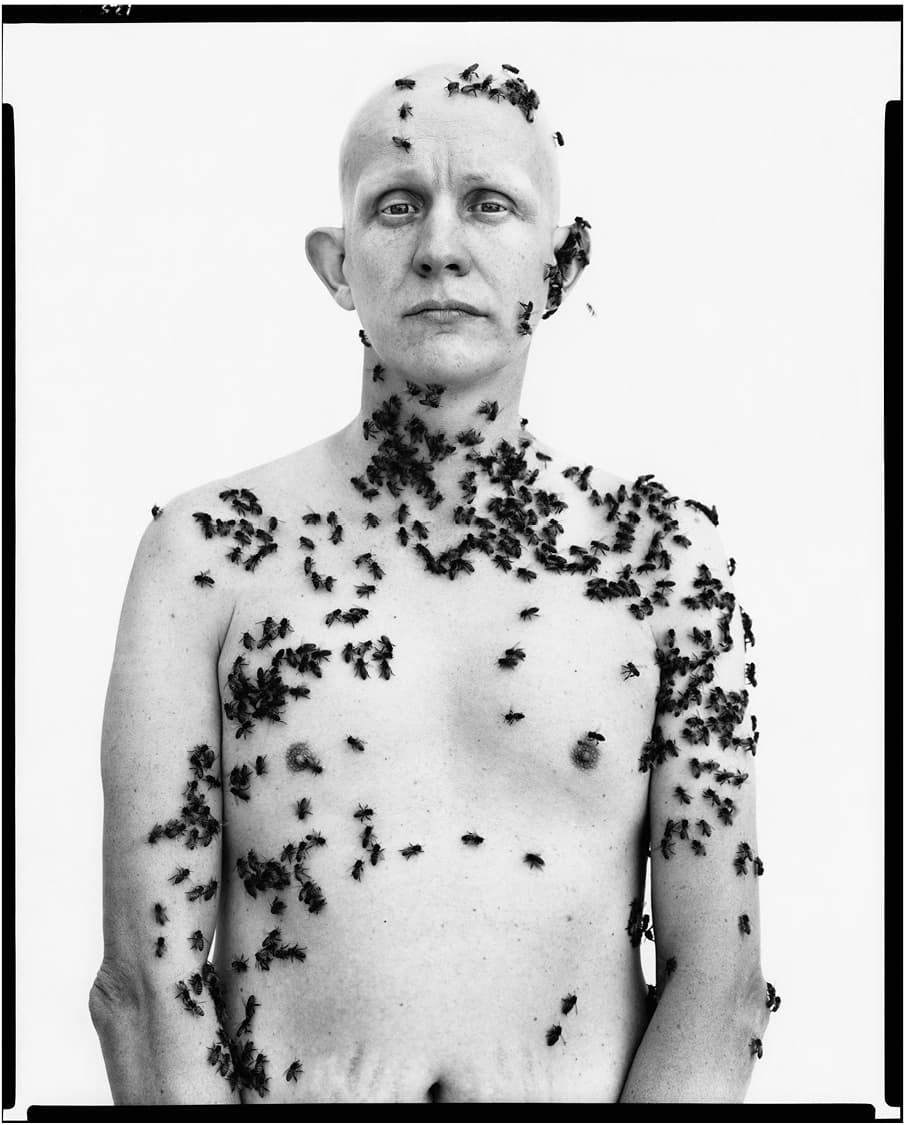Richard Avedon’s Centenary
- Magazine Article
- Collection
Iconic beekeeper portrait now on view

In the American West: Ronald Fischer, beekeeper, Davis, California, May 9, 1981 1981, printed 1985. Richard Avedon (American, 1923–2004). Gelatin silver print; 143.1 x 114.5 cm. Leonard C. Hanna Jr. Fund, 2005.143. © The Richard Avedon Foundation
Celebrated fashion and portrait photographer Richard Avedon was born just over 100 years ago on May 15, 1923. Museums and galleries around the country, including the Cleveland Museum of Art, are commemorating the centenary of his birth this summer and fall by showing his art. A masterpiece by Avedon from the museum’s collection, In the American West: Ronald Fischer, beekeeper, Davis, California, May 9, 1981, is installed in gallery 224A and will remain on view there through October 15, 2023.
Avedon produced this startling portrait as part of a commission from the Amon Carter Museum in Fort Worth to photograph the American West. Each summer for six years, he traveled the West seeking ordinary working people who were “surprising—heartbreaking—or beautiful in a terrifying way.”
Avedon had the idea of photographing a person seen “through haze of bees” and even made a quick sketch of the composition on yellow, lined paper. To find the right sitter, he put a notice in a beekeepers’ magazine soliciting snapshots of people willing to be photographed with bees on their body. From the submissions, he selected an Illinois beekeeper, Ronald Fischer.
“All photographs are accurate. None of them is the truth.”
Avedon once said, “All photographs are accurate. None of them is the truth.” He photographed the Midwesterner at a tomato farm in Davis, California. Dr. Norman Gary, a noted entomologist and consultant for the film and television industry on bee-related projects, brought 120,000 bees. Onto Fischer’s chest, he rubbed pheromone from the hive’s queen bee along with a plant extract similar to peppermint; these attracted the insects and lessened their desire to sting. Avedon exposed 121 sheets of 8-by-10-inch film over two days. In the end, he chose as the final work this image, in which the beekeeper “removes himself in a Buddhist way” and is calm and at home with the insects. For Fischer, who was a beekeeper, being photographed may have been scarier than hosting the bees.
All the sitters in the American West series were posed in the same setting: outdoors against a large white sheet of seamless paper that eliminated any specificity of time or location. Jake Skeets, a Navajo poet whose brother was photographed for the series, writes about Avedon’s purposeful erasure of the actual background as situating “the American West in an infinite space, both past and present. Our only gesture of time is a face, a stare, a posture, the human body, all beautiful and true. Time is not an experiential element in Avedon’s work. Time is emotive. Time is physical. We can trace time along the photographs themselves. There is no history. There is no destiny. There is only story.”